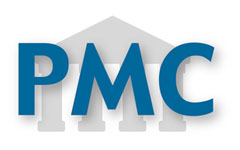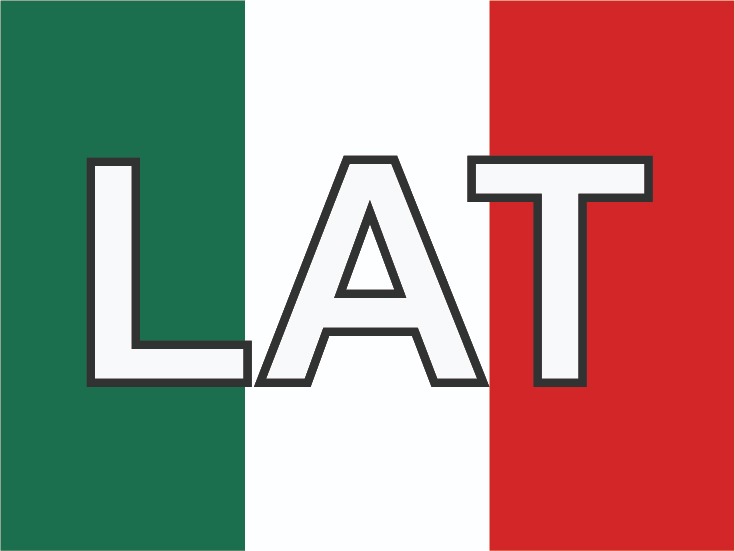Introduction of software tools for epidemiological surveillance in infection control in Colombia
Abstract
Introduction:Healthcare-Associated Infections (HAI) are a challenge for patient safety in the hospitals. Infection control committees (ICC) should follow CDC definitions when monitoring HAI. The handmade method of epidemiological surveillance (ES) may affect the sensitivity and specificity of the monitoring system, while electronic surveillance can improve the performance, quality and traceability of recorded information.
Objective:To assess the implementation of a strategy for electronic surveillance of HAI, Bacterial Resistance and Antimicrobial Consumption by the ICC of 23 high-complexity clinics and hospitals in Colombia, during the period 2012-2013.
Methods:An observational study evaluating the introduction of electronic tools in the ICC was performed; we evaluated the structure and operation of the ICC, the degree of incorporation of the software HAI Solutions and the adherence to record the required information.
Results:Thirty-eight percent of hospitals (8/23) had active surveillance strategies with standard criteria of the CDC, and 87% of institutions adhered to the module of identification of cases using the HAI Solutions software. In contrast, compliance with the diligence of the risk factors for device-associated HAIs was 33%.
Conclusions:The introduction of ES could achieve greater adherence to a model of active surveillance, standardized and prospective, helping to improve the validity and quality of the recorded information.
Authors
Downloads
Keywords
- Infeccion hospitalaria
- Farmacorresistencia Microbiana
- vigilancia epidemiológica
- programas informáticos
- Garantía de la Calidad de Atención de Salud
- Colombia.
References
WHO. The burden of health care-associated infection worldwide. Accessed: 27 Jan 2014. Available from: http://www.who.int/gpsc/country_work/burden_hcai/en/
El-Masri MM, Oldfield MP. Exploring the influence of enforcing infection control directives on the risk of developing health care associated infections in the intensive care unit a retrospective study. Intensive Crit Care Nurs. 2012; 28(1): 26–31.
Martin M, Zingg W, Hansen S, Gastmeier P, Wu AW, Pittet D, et al. Public reporting of healthcare-associated infection data in Europe. What are the views of infection prevention opinion leaders? J Hosp Infect. 2013; 83(2): 94–8.
Greene LR, Cain TA, Khoury R, Krystofiak SP, Patrick M, Streed S. APIC position paper. The importance of surveillance technologies in the prevention of health care-associated infections. Am J Infect Control. 2009; 37(6): 510–3.
Hebden JN. Rationale for accuracy and consistency in applying standardized definitions for surveillance of health care-associated infections. Am J Infect Control. 2012; 40(5) Suppl: S29–S31.
Mertens K, Morales I, Catry B. Infections acquired in intensive care units results of national surveillance in Belgium, 1997-2010. J Hosp Infect. 2013; 84(2): 120–5.
Grota PG, Stone PW, Jordan S, Pogorzelska M, Larson E. Electronic surveillance systems in infection prevention organizational support, program characteristics, and user satisfaction. Am J Infect Control. 2010; 38(7): 509–14.
Woeltje KF. Moving into the future electronic surveillance for healthcare-associated infections. J Hosp Infect. 2013; 84(2): 103–5.
Perla RJ, Peden CJ, Goldmann D, Lloyd R. Health care-associated infection reporting the need for ongoing reliability and validity assessment. Am J Infect Control. 2009; 37(8): 615–8.
Acosta-Gnass S, Aragon JC, Benoit SR, Betancourt MI. Evaluación de la infección hospitalaria en siete países latinoamericanos. Rev Panam Infectol. 2008; 10(4) Supl 1: S112–S122.
Villalobos AP, Barrero LI, Rivera SM, Ovalle MV, Valera DA. Surveillance of healthcare associated infections, bacterial resistance and antibiotic consumption in high-complexity hospitals in Colombia, 2011. Biomédica. 2014; 34(Suppl 1): 67–80.
Shaban-Nejad A, Riazanov A, Charland KML, Rose GW, Baker CJO, Tamblyn R, et al. HAIKUA Semantic Framework for Surveillance of Healthcare-Associated Infections. Procedia Comput Sci. 2012; 10: 1073–9.
Trick WE. Building a data warehouse for infection control. Am J Infect Control. 2008; 36(3) Supplement: S75–S81.
Cartmill RS, Walker JM, Blosky MA, Brown RL, Djurkovic S, Dunham DB, et al. Impact of electronic order management on the timeliness of antibiotic administration in critical care patients. Int J Med Inform. 2012; 81(11): 782–91.
Wright M-O, Carter E, Pogorzelska M, Murphy C, Hanchett M, Stone PW. The APIC research agenda results from a national survey. Am J Infect Control. 2012; 40(4): 309–13.
Leal J, Laupland KB. Validity of electronic surveillance systems: a systematic review. J Hosp Infect. 2008; 69(3): 220–29.
Vozikis A. Information management of medical errors in Greece. The MERIS proposal. Int J Inf Manage. 2009; 29(1): 15–26.
Organización Panamericana de Salud . Guía de evaluación rápida de programas hospitalarios en prevención y control de las infecciones asociadas a la atención de salud. Washington, DC: OPS; 2011.
Instituto Nacional de Salud . Implementación de la estrategia de vigilancia en salud pública de infecciones asociadas a la atención en salud. Circular No. 0000045. Ago 29, 2012.
CDC. Tracking Infections in Acute Care Hospitals/Facilities - NHSN. Accessed: 31 Jan 2014. Available from: http://www.cdc.gov/nhsn/acute-care-hospital/index.html.
Lallana AMJ, Feja SC, Malo FS, Abad DJM, Bjerrum L, Rabanaque HMJ. Variations in the Prescription of Antibiotics among Primary Care Areas in the Autonomous Region of Aragon, Spain. Rev Esp Salud Publica. 2012; 86(6): 627–35.
Haley RW, Quade D, Freeman HE, Bennett JV. The SENIC Project Study on the efficacy of nosocomial infection control (SENIC Project). Summary of study design. Am J Epidemiol. 1980; 111(5): 472–85.
Kramer A, Assadian O, Helfrich J, Krüger C, Pfenning I, Ryll S, et al. Questionnaire-based survey on structural quality of hospitals and nursing homes for the elderly, their staffing with infection control personal, and implementation of infection control measures in Germany. GMS Hyg Infect Control. 2013; 8(1): Doc11–Doc11.
Freeman R, Moore LSP, García Álvarez L, Charlett A, Holmes A. Advances in electronic surveillance for healthcare-associated infections in the 21st Century: a systematic review. J Hosp Infect. 2013; 84(2): 106–119.
Keller SC, Linkin DR, Fishman NO, Lautenbach E. Variations in identification of healthcare-associated infections. Infect Control Hosp Epidemiol. 2013; 34(7): 678–686.
Lin MY, Hota B, Khan YM, Woeltje KF, Borlawsky TB, Doherty JA. Quality of traditional surveillance for public reporting of nosocomial bloodstream infection rates. JAMA. 2010; 304(18): 2035–41.
El-Saed A, Balkhy HH, Weber DJ. Benchmarking local healthcare-associated infections available benchmarks and interpretation challenges. J Infect Public Health. 2013; 6(5): 323–30.
Feltovich F, Fabrey LJ. The current practice of infection prevention as demonstrated by the practice analysis survey of the Certification Board of Infection Control and Epidemiology, Inc. Am J Infect Control. 2010; 38(10): 784–8.
Edwards JR, Pollock DA, Kupronis BA, Li W, Tolson JS, Peterson KD, et al. Making use of electronic data the National Healthcare Safety Network e Surveillance Initiative. Am J Infect Control. 2008; 36(3) Suppl:S21–S26.
Turner C, Bishay H, Bastien G, Peng B, Phillips RC. Configuring policies in public health applications. Expert Syst Appl. 2007; 32(4): 1059–72.
Chiou S-F, Chuang J-H Only automated surveillance with 100% sensitivity can save ICPs’ time. Am J Infect Control. 2011; 39(4): 346.
Copyright (c) 2015 Universidad del Valle

This work is licensed under a Creative Commons Attribution-NonCommercial 4.0 International License.
The copy rights of the articles published in Colombia Médica belong to the Universidad del Valle. The contents of the articles that appear in the Journal are exclusively the responsibility of the authors and do not necessarily reflect the opinions of the Editorial Committee of the Journal. It is allowed to reproduce the material published in Colombia Médica without prior authorization for non-commercial use




















